|
Posted in category "Popes"
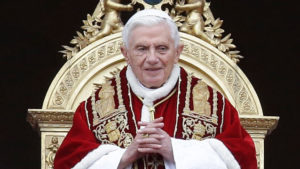
On April 10, 2019 Pope Emeritus Benedict XVI released an essay, The Church and the Scandal of Sex Abuse. It was published in an obscure Bavarian priests’ newsletter. Almost immediately ultra-conservative North American Catholic news outlets published an English translation. Benedict said he began drafting the essay shortly after Pope Francis announced that the world’s bishops’ conferences would meet in Rome in February 2019 to discuss the sex abuse crisis, and how to protect minors and vulnerable adults.
“Since I myself had served in a position of responsibility as shepherd of the Church at the time of the public outbreak of the crisis, and during the run-up to it,” Benedict writes, “I had to ask myself – even though as emeritus, I am no longer directly responsible – what could I contribute to a new beginning.”
Benedict’s 6,000-word essay did not address many key questions: How much did he know and refuse to say about how these issues were handled in his pontificate and that of Pope John Paul II? Why didn’t he do more about clerical sex abuse and its cover up in his three decades as a high official in the Vatican? Why was all his anti-gay rhetoric never applied to Vatican prelates and bishops, only to homosexual men and women in secular society?
A woman who is internationally known for her support of LGBT Catholics, and one who was persecuted for her views by the future Pope Benedict XVI, spotted him on a commercial flight to Rome. Cardinal Ratzinger had refused every one of her requests to meet. Seeing an opportunity, she waited until a seat opened up next to him and went over and sat down. He was stuck. She tried every which way to get him to talk to her about the love and faith of gay and lesbian Catholics. She said he was a gentle man, polite and soft-spoken, but not for one minute would he entertain any view other than his own. The supremacy of the Church and its teachings did not leave room for discussion or doubt.
“Among the freedoms that the Revolution of 1968 sought to fight for was this all-out sexual freedom, one which no longer conceded any norms.”
Pope Emeritus Benedict blames the cultural upheavals and sexual revolution of the 1960s for most of the problems in the Catholic Church. In his view, the roots of the sexual abuse crisis lie in a steep decline in public “respectability,’ and theologians who challenged the Church’s opposition to birth control. Together they opened the floodgates to other sexual sins, dissent and the abandonment of God. But, there are some gigantic holes in Benedict’s reasoning. How is secular society to blame for the cover up of clerical sex abuse by bishops, Vatican officials and popes? How did the Legionaries of Christ founder, the Rev. Marcial Maciel Degollado, a serial rapist and molester, operate freely and without fear at he highest levels of the Vatican? He was protected and his victims were ignored and harassed.
Was the Church swept away with all the sexual taboos? No, it was The Pill. A bitter pill for many Catholics who turned away from the Church after Humane Vitae. I was a teenager in the 1960s, and I recall talking to my parents at the dinner table about the Pope Paul’s decision. My parents felt the church had made a terrible mistake. Humanae Vitae, while a beautiful document, wasn’t based on common sense. The church lost a lot of credibility with ordinary Catholics and their children.
“The mental collapse was also linked to a propensity for violence. That is why sex films were no longer allowed on airplanes because violence would break out among the small community of passengers.”
What! I never knew they showed dirty movies on airlines! When was that?! Passengers would see the dirty movies and start a riot on the plane! Wow!
“Faith is a journey and a way of life.”
That is a very Vatican II statement on the progress of faith. I was surprised.
“In various seminaries homosexual cliques were established, which acted more or less openly and significantly changed the climate in seminaries. In one seminary in Southern Germany, candidates for priesthood and candidates for the lay ministry of pastoral specialist lived together. At the common meals, seminarians and pastoral specialists ate together, the married among the laymen sometimes accompanied by their wives and children, and on occasion by their girlfriends. The climate in this seminary could not provide support for preparation to the priestly vocation. The Holy See knew of such problems, without being informed precisely.”
This is a very strange passage. The sentence about “homosexual cliques” is Benedict’s one reference to homosexuality in his essay. If he feels that homosexuality is a major reason behind the sex abuse crisis, why does he only allude to it in one sentence about a few seminaries? If the Vatican felt that “homosexual cliques”–especially ones who were open and active–were changing the character of the seminaries, why didn’t they do anything about it? What is also odd, given Benedict’s fixation on homosexuality as a root cause of everything bad, is why he objected to the presence of women and children having dinner with seminarians? Why was this “climate” (mixed company–married men, women, children, lay ministers) inappropriate for priestly candidates? As priests, wouldn’t they work and socialize with a variety of people? Or, is it the notion that seminarians should be separated from lay people, to give them the feeling they are special, set apart, above the law and other norms? 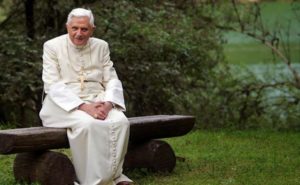
“There were–not only in the United States of America–individual bishops who rejected the Catholic tradition as a whole and sought to bring about a kind of new, modern “Catholicity” in their dioceses. Perhaps it is worth mentioning that in not a few seminaries, students caught reading my books were considered unsuitable for the priesthood. My books were hidden away, like bad literature, and only read under the desk.”
What a whiny, self-pitying remark from a man that spent his career rooting out and punishing free-thinkers and Church critics. Hans Kung, Leonardo Boff, liberation theology, feminist theologians, Elizabeth Johnson, U.S. women’s religious communities, Jeannine Gramick, Bob Nugent, and many others all felt his disapproval and heavy, censoring hand. They handled themselves with more dignity.
“The question of pedophilia, as I recall, did not become acute until the second half of the 1980s. In the meantime, it had already become a public issue in the U.S., such that the bishops in Rome sought help, since canon law, as it is written in the new (1983) Code, did not seem sufficient for taking the necessary measures.”
Is pedophilia in the Church only an issue when it’s acute? “Acute” in this instance means the number of cases and accusations coming to the attention of the public. Why did the Vatican delay in addressing the inadequacy of canon law to investigate, judge and impose significant ecclesiastical sanctions on credibly accused clergy and religious? Benedict knew about thousands of sexual abuse cases and accusations, but his highest priority was to protect the Church from scandal, not children or teenagers.
One of the most stomach-turning incidents in his tenure is the case of the Wisconsin priest, Rev. Lawrence C. Murphy, who worked at a renowned school for deaf children from 1950 to 1974. (See my comments on the case in this post.) Murphy molested around 200 boys during his time at the school. Nowhere in his essay does Benedict express any shame or regret for his role in the Murphy case, or apologize for official delays or inaction in other cases. His silence is instructive to his frame of mind, priorities and values.
“A balanced canon law that corresponds to the whole of Jesus’ message must therefore not only provide a guarantee for the accused, the respect for whom is a legal good. It must also protect the Faith, which is also an important legal asset.”
This “double guarantee” is missing a provision. It protects the rights of the accused. Fine. It protects “the Faith” as a “legal asset.” Good. But he never mentions justice or mercy for the victims and bereaved–certainly an integral part of Jesus’ message. It appears this part is missing in the canon law Benedict cites. In John’s Gospel Jesus protected a woman accused of adultery by suggesting a man without sin cast the first stone. But in the Gospels of Luke and Matthew, Jesus is very clear that if anyone harmed children their punishment would be dire–“It would be better for him if a millstone were hung around his neck and he were thrown into the sea, than that he would cause one of these little ones to stumble.”
“Why did pedophilia reach such proportions? Ultimately the reason is the absence of God.”
The absence of God in men with personality disorders and mental health issues which incites them to sexually molest children; or just the absence of God? Does Benedict believe pedophilia is ultimately a spiritual evil that we can pray to God to purify away?
“A young woman who was a (former) altar server told me that the chaplain, her superior as an altar server, always introduced the sexual abuse he was committing against her with the words: “This is my body which will be given up for you.” It is obvious that this woman can no longer hear the very words of consecration without experiencing again all the horrific distress of her abuse. Yes, we must urgently implore the Lord for forgiveness, and first and foremost we must swear by Him and ask Him to teach us all anew to understand the greatness of his suffering, His sacrifice. And we must do all we can to protect the gift of the Holy Eucharist from abuse.”
What exactly is Benedict saying? Is he implying a connection between the abuse of the liturgy and sexual abuse? If people would only approach communion in a reverent way most of the problems in Catholicism will clear up? Why do “we” need to implore the Lord for forgiveness, when “we” have not committed this terrible sin and violation? The priest in question, and his superior if he protected him, are the people who need to beg for forgiveness. Not only to our Lord, but first to the girl, her family, and all the people whose faith he has ruined by his terrible actions. Of all the sections in the essay, this passage is the most emotionally remote and bleak. It horrified me to see such a distance between our highest spiritual leader and the people he was supposed to serve.
“Indeed, the Church today is widely regarded as just some kind of political apparatus. One speaks of it almost exclusively in political categories, and this applies even to bishops, who formulate their conception of the church of tomorrow in almost exclusively in political terms.”
Did Benedict have the U.S. Conference of Catholic Bishops in mind? We have a hard core of loud conservative bishops and some liberal bishops. With the election of Pope Francis, the demographics have sifted slightly, as more moderate, pastoral bishops have been added. Early in his pontificate, Francis scolded the USCCB for their preoccupation with gay marriage and abortion. For the last two decades, a conservative subset of U.S. bishops has focused on abortion and religious liberty (freedom to discriminate against gay and lesbian couples, women who use birth control) to the marginalization of many other social and economic issues. They were comfortable in the Republican party tent. The smaller minority of liberal bishops promoted government support for the poor, immigrants and health care. They tended to line up with the Democratic party. Some conservative bishops urged people not to vote for pro-choice politicians, or politicians that supported gay marriage–no matter what their views and voting record on other issues. They also obliged the Republican party by torpedoing any moderate or liberal Catholic presidential and congressional candidates. If Francis continues to appoint bishops with a more pastoral vs. conservative political focus, the USCCB’s activity in the public square will be less politically polarizing.
“The idea of a better Church, created by ourselves, is in fact a proposal of the devil, with which he wants to lead us away from the living God, through a deceitful logic by which we are too easily duped.”
Should Catholicism be a smaller and more tradition-minded community or a larger and more inclusive church of imperfect believers at various stages in their spiritual journey? Who does a smaller, purer church exclude? People who reject libertarian economics and individualism in favor of the poor and marginalized; or people who are concerned primarily with sexual morality? I am not immune to this feeling. How many times have I longed for a church of like-minded believers. But I also recognize that making the church an ideologically purer place will inevitably extinguish it. We can help shape it, but we cannot remake it. It is not ours to remake.
In 2016, Philadelphia Archbishop Charles Chaput said in a speech delivered at the University of Notre Dame that the Church should “do everything we can to bring tepid Catholics back to active life in the church.” But, he continued, “we should never be afraid of a smaller, lighter church if her members are also more faithful, more zealous, more missionary and more committed to holiness.”
Cardinal Joseph Tobin, in a 2018 talk at Villanova University, urged Catholics to resist allowing “the individualism that permeates our culture” to infect the church. “Even from ancient times, there have been individuals and movements who have tried to define and delimit what it means to be a Catholic Christian,” the Newark, NJ archbishop said. “Nevertheless, the universal church has always repudiated such attempts. It is only the Lord who ultimately judges who belongs and who does not belong.”
Domine, quo vadis? 
In the meantime, Pope Emeritus Benedict needs to put down his pen.
I think he did. 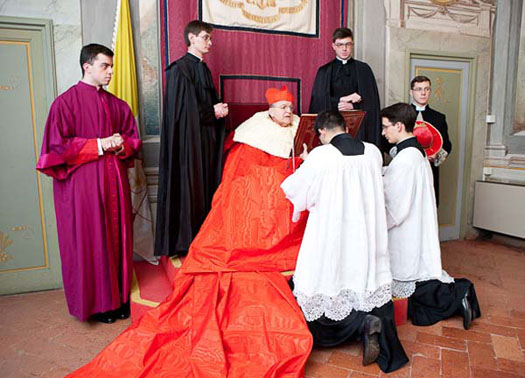
Cardinal Raymond Burke is featured prominently in Martel’s new book, In the Closet of the Vatican – Power, Homosexuality, Hypocrisy. A central thesis of the book is that cardinals and bishops who make the strongest condemnations of homosexuality are more likely to be gay themselves; Martel describes this as part of their attempt to cover up who they really are.
Chapter 2, “Gender Theory” focuses on Cardinal Burke’s flouting of his extravagant liturgical regalia–the 12 metre/39 ft. red moire silk cape, the “cappa magna;” the velvet gloves, lace and vivid colors. His nickname in the Curia is “The Wicked Witch of the Midwest.” The cardinal’s assistant refers to him in the feminine: “His Eminence has no office,” the young priest tells me. ‘Elle travaille chez elle.’ (She works at home.) Julian Fricket, a drag artist the author interviewed, commented on Cardinal Burke’s “Liturgy Queen” appearance: “What strikes me when I look at Cardinal Burke’s cappa magna, robes or hats topped by floral arrangements, is its overstatement. The biggest, the longest, the tallest: it’s all very typical of drag queen codes.” 
On page 28, Martel describes Cardinal Burke holding court: “How often we see him surrounded by young seminarians kissing his hand–also magnificent in that our Hadrian seems to follow the cult of Greek beauty, which, as we know, was always more male than female. Winning both the admiration and laughter of Rome, Burke always appears surrounded by obsequious chaperones, Antinous-like figures kneeling in front of him or page boys carrying the long red train of his cappa magna, as choirboys might for a bride.”
“Cardinal Burke is the very thing he denounces,” a cleric close to (Pope) Francis states starkly. The same man believes the pope might have had Burke in mind in October 2017 when he denounced “hypocritical” priests with “make-up” souls. “On the outside,” Pope Francis stated, “they present themselves as righteous, as good: they like to be seen when they pray and when they fast and when they give alms. (But) it is all appearance and in their hearts there is nothing…they put make-up on their souls, they live on make-up, holiness is make up for them…Lies do a lot of harm, hypocrisy does a lot of harm: it is a way of life.”
I thought Pope Francis’ use of “make up” was an interesting choice of words. Is that “make up” the way a woman will put on make up to make herself more attractive; or is it a clown? an actor? transvestite? Halloween costume? drag queen? They all might apply.
Cardinal Burke was described as “unstraight” in the book (page 29). This definition describes a person who is a non-heterosexual or one who is sexually abstinent. I don’t think Burke is sexually active, but I find the absence of females in his life, and his fixation with the sexual morality of homosexuality a little fishy.
In the Closet of the Vatican is the latest in a series of books, articles and published letters to attempt to name without naming closeted prelates in the Vatican and U.S. hierarchy. The authors flesh out their tales with stories of intrigue, corruption and hypocrisy among the cardinals, bishops and Vatican officials. Some of the most notable include:
2019: In the Closet of the Vatican – Power, Homosexuality, Hypocrisy – French writer Frederic Martel tries to explain why the Catholic Church is filled with closeted, and mostly self-hating, gay men. If I were a gay Catholic man I would be very depressed reading this book. A few dead prelates are identified, but most in the “Ring of Lust” around Pope John Paul II remain unnamed since they are still alive and politically lethal. The book is rich in rumor, gossip and innuendo. The publication date coincided with the Vatican’s sex abuse summit, officially the “Meeting on the Protection of Minors in the Church”, that was convened by Pope Francis and ran from February 21-24, 2019. You can bet this book was one of the main sideline conversations. 
2018: “Testimony” – A series of poison pen letters by Archbishop Carlo Maria Vigano, former Apostolic Nuncio to the United States (2011-2016). These letters were released via several U.S.-based and conservatively biased news outlets on August 22, September 29 and October 19, 2019. Vigano focused on liberal or moderate prelates insinuating they were gay or soft on homosexual priests. Vigano blamed the sex abuse crisis on gay priests and bishops. He accused Pope Francis of protecting homosexual predators–particularly the former Cardinal Theodore McCarrick and called on the pope to resign. Archbishop Vigano’s first letter was released during the Vatican’s World Meeting of Families in Ireland; and the 3rd on the observance of the North American Martyrs. The last date struck me as very dramatic and is probably key to Archbishop Vigano’s character.
2013: “The Vatican’s Secret Life,“ was published in December 2013 in Vanity Fair magazine by Michael Joseph Gross. The opening scene is in a sauna.
2012: His Holiness: The Secret Papers of Benedict XVI by Gianluigi Nuzzi was published in May 2012. The title of the English ebook is Ratzinger Was Afraid: The Secret Documents, the Money, and the Scandals that Overwhelmed the Pope. The book is based on confidential memos between Pope Benedict XVI and his personal secretary, Archbishop Georg Ganswein. The leaked documents ignited the “VatiLeaks” scandal. The book is full of fractional infighting, jealousies, and bribes and donations made to procure a papal audience. VatiLeaks was also the source for homosexual scandals, including a claim that Gian Maria Vian, editor of L’Osservatore Romano, manufactured evidence that Dino Boffo, editor of L’Avvenire, had an affair with a married man and harassed his wife. Boffo resigned, but later claimed his ouster was part of a power struggle in the hierarchy. The fact-finding mission Pope Benedict XVI organized to investigate VatiLeaks produced a 300-page dossier describing a powerful network of homosexual prelates, some of whom were being blackmailed. The report ultimately led to Pope Benedict’s resignation on December 17, 2012. He was the first pope in 600 years to resign.
2006: The Rite of Sodomy: Homosexuality and the Roman Catholic Church was written and published by conservative writer Randy Engels. This 1,282 page tone focuses primarily on dead homosexual bishops and cardinals in the American hierarchy before 2000. There is a lot of material on John Cardinal Wright and Francis Cardinal Spellman.
2004: Vatican II, Homosexuality and Pedophilia by Atila Sinke Guimaraes. Guimaraes is a traditionalist Catholic and manages the website Traditional in Action. The book blames Vatican II and homosexuality for the downfall of Catholicism. He makes some points about the cover-up culture in the Vatican, and the alleged homosexuality of Pope Paul VI.
2003 – BishopAccountability.org – This site is dedicated to the victims and loved ones of clergy sex abuse. Constantly updated with new information, it is a good source of identifying homosexual cardinals, bishops, priests and other religious who were credibly accused of sex abuse or protecting abusers.
2002: The Silence of Sodom: Homosexuality in Modern Catholicism was written by theologian Mark D. Jordan. This book was published at the time the sex abuse crisis began to break in the U.S. It was also the period when Pope John Paul II and Cardinal Ratzinger (the future Pope Benedict XVI) issued hostile and degrading statements about homosexuals, and their visibility in the church and society. In response, Mark Jordan set out to discover why a church filled with gay men was so homophobic and duplicitous. Jordan coined the term, “Liturgy Queen.”
1999: Gone with the Wind in the Vatican was originally published under the pseudonym “Millenari.” Monsignor Luigi Marinelli eventually admitted his involvement and said he had nine or ten other co-authors. The book was published in 200o in English with the title Shroud of Secrecy: The Story of Corruption Within the Vatican. The book offers an insider’s account of sex, corruption and intrigue. This steamy 288-page book describes all kinds of sexual scandals, and a Vatican culture dominated by favor swapping, careerism and back-stabbing. The main characters in the book were given pseudonyms from Margaret Mitchell’s novel, Gone with the Wind (1936).
The granddaddy and most outrageous of all expose writers, French author Roger Peyrefitte, wrote and spoke extensively about homosexuals in the Vatican. He famously outed Pope Pius XII in his 1955 book, Les Clefs de Saint Pierre (The Keys of St. Peter). In a 1976 interview with the Italian magazine, Tempo, he commented on a January 1976 homily by Pope Paul VI. Peyrefitte said the pope’s words were hypocritical and made this statement: “The second sin from which I feel I have been freed, after this grotesque papal speech is my homosexuality. In my last book, Hunting Scenes, and in another, About the French People, I stated with all the respect due a Pope (especially when he is still alive) that he is homosexual. It is amazing that the papal speech (against homosexuality) was published at the same time as my book. Was Paul VI moved by a guilt complex? Buy why should he feel guilty? It is known that a boyfriend of Paul VI was a certain movie star*, whose name I will not give, although I remember him very well. He was an unknown actor when our friend Paul was Cardinal Montini, Archbishop of Milan. (*alleged to be Paolo Carlini)
Lots to ponder. Especially the stomach-turning notion that most of Catholicism’s anti-gay rhetoric is produced by gay men themselves; with the permission of gay popes, or straight popes that are happy to take the money and men their gay minions raise for their causes. 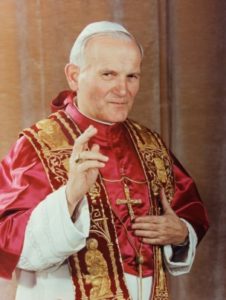
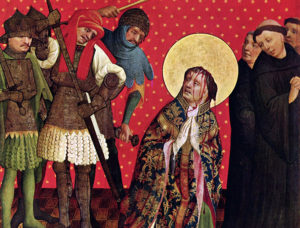
The headline read: “Thomas Becket’s bloody tunic returns to Canterbury 850 years after he died. Vatican to send back historic relic worn by archbishop as he was brutally murdered.” In 2020, Canterbury Cathedral will mark the 850th anniversary of Becket’s assassination, and the 800th anniversary of the creation of his shrine.
Celebrating Becket
Canterbury Cathedral, where Becket was killed on December 29, 1170 following a series of bitter disputes with King Henry II, became a shrine after Pope Alexander III made Becket a saint three years following the murder. It drew thousands of pilgrims (think of Canterbury Tales by Chaucer) until the shrine was destroyed by King Henry VIII in 1538. 
Spotting a way to make money and draw visitors, Canterbury Cathedral is set to host a series of celebrations in 2020 to mark the anniversaries, including a joint church service by Catholics and Anglicans.
I wonder how they are going to navigate a potential P.R. nightmare: Archbishop Becket was killed because he refused to permit priests and others claiming clerical status to be tried in the King’s courts for rape, murder, theft and other serious crimes. This sounds a lot like the sex abuse scandals today–cardinals, bishops, church officials and popes refusing to turn criminal clerics over to secular authorities. Their top priority was to shield themselves and their priests from public exposure and civil justice. In the end their stance was about power, privilege and revenues. 
The 1964 film, Becket, starring Richard Burton as Becket, and Peter O’Toole as Henry II gave a sympathetic portrayal of Becket as a principled man standing up to civil authority. Three decades of sex abuse scandals in the Catholic Church has ended portrayals of bishops as principled men. Most people today would clap and cheer to see a bishop knocked down. They prefer to rely on civil authorities for justice, not shifty archbishops or opaque canonical courts.
The King’s Friend
Thomas Becket, also known as St. Thomas of Canterbury, was born in London in 1119 or 1120. His parents were both of Norman descent. Becket was a self-made man. Recommended by Theobald of Bec, Archbishop of Canterbury, he was appointed Lord Chancellor in 1153 by King Henry II. They became very close friends. Henry even sent his son and heir, young Henry. to be educated in Becket’s household. 
Some clues can be surmised about Becket’s character from stories about him: he was proud, vain, sensitive about his prerogatives and authority, but also warm and protective. He faced his death with courage and resolve. He sought to protect his monks from the knights who came to kill him. Henry’s son said he received more fatherly love from Becket in one day than he did from his father, the king, in a lifetime. Becket was described as dressing lavishly and extravagantly. While riding together through London on a cold winter’s day, King Henry saw a pauper shivering in his rags. He asked Becket if ht would not be charitable to give the man a cloak. Becket agreed that it would. The King grabbed Becket’s expensive fur cloak and a tussle ensued. The King finally succeeded in ripping it away and threw it to the beggar. Becket was very unhappy and offended.
Archbishop of Canterbury
Everything changed in 1162, when Archbishop Theobald of Canterbury died and his seat became vacant. King Henry immediately saw an opportunity to increase his influence over the church by naming his loyal adviser and friend, Thomas Becket, to the highest ecclesiastical post in the land. The pope agreed on his selection. In preparation for his appointment, Becket was ordained a priest on June 1, 1162. The next day he was ordained a bishop, and later that afternoon made Archbishop of Canterbury. 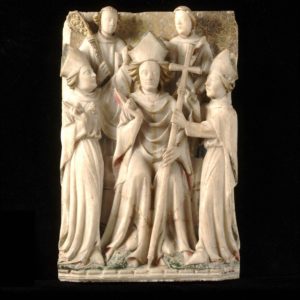
Becket changed on becoming Archbishop of Canterbury. He defended the rights of the church. He exhibited concern for the poor. He became an ascetic. He wore a filthy hair shirt under his vestments. This change is a great mystery, for which none of the chroniclers agree on an answer. Why did Becket evolve from a greedy and luxury-loving man, a loyal chancellor and friend, to a obstinate and contentious churchman? Did he take his appointment seriously? Was it an opportunity to be independently powerful from his friend, King Henry? Or did he really have a spiritual awakening and conversion? I have no answer, but lean toward the idea he found his vocation.
The Benefit of Clergy
The big fissure between King Henry and Archbishop Becket came over “the benefit of clergy” (Privilegium Clericale). When accused of a crime members of the clergy could claim they were outside the jurisdiction of secular courts and be tried in an ecclesiastical court under canon law instead. This usually resulted in a much lighter sentence or punishment. King Henry was determined to increase his control over the church by eliminating this custom. He wanted clerics convicted of serious crimes to be handed over to civil authorities for punishment. The church hierarchy disagreed, arguing that this would undermine the principle of clerical immunity. 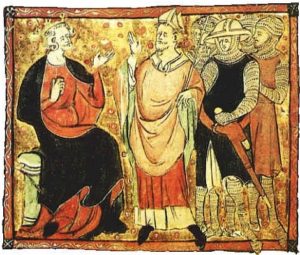
Two violent crimes brought the problem to a head. A cleric in the diocese of Worcester was accused of mudering a man in order to rape his young daughter. King Henry ordered the man to be tried in a civil court. Becket intervened, commanding the Bishop of Worcester to put the man in an episcopal prison and not allow royal officials to touch him. In another notorious case, Philip of Bois, a canon of Bedford, was acquitted in the court of the Bishop of Lincoln on the charge of murdering a knight. Pushed by the family of the knight seeking justice, the Sheriff of Bedford attempted to re-open the case in a royal court. He was resisted, and furiously abused by Philip, the Bedford canon. Henry angrily demanded justice on the charge of homicide and on an additional charge of contempt. Becket attempted to solve the problem by banishing Philip for a few years, but the whole affair merely showed the inadequacy of canon law in punishing murderers, rapists and thieves. 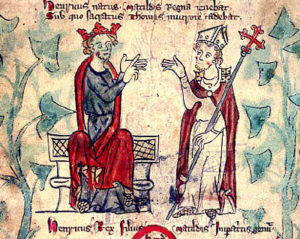
The rift between the two men grew. King Henry felt betrayed. Archbishop Becket distrusted the motives of the king. The conflict became bitterly personal. Becket went into exile in France. Henry finally got to Becket through the archbishop’s pride. On May 24, 1170, the king had his son, Henry the Younger, crowned at Canterbury by the Archbishop of York. Becket could not stand the snub to the prestige of his office, and two months later the king and archbishop agreed to a compromise which allowed Becket to return and re-crown Henry’s son in a second ceremony.
While in France, Becket excommunicated the Bishops of Salisbury and Lincoln for their support of the king. He excommunicated the Archbishop of York for leading the first coronation. He refused to absolve them. More conflicts arose, and Henry, exasperated and enraged, uttered the final, fateful words: “Will no one rid me of this turbulent priest? What miserable drones and wretches have I nourished and brought up in my household, who let their lord be treated with such shameful contempt by a low-born cleric!”
Murder in the Cathedral
There are several contemporary accounts of what happened on Tuesday, December 29, 1170. Edward Grim, a clerk from Cambridge who was visiting Canterbury Cathedral gave an eyewitness description. Grim tried to protect Archbishop Becket, and nearly had his arm cut off by one of the knight’s swords. He published his account as Vita S. Thomae (Life of St. Thomas) in 1180.
Four knights first entered the cathedral near dusk without weapons. They left them outside by a tree. The knights were escorted in by one of Becket’s monks, Hugh de Horsea, later renamed “Hugh the Evil Clerk.” Becket was informed that four men had arrived to wished to speak with him. He consented to see them. The knights sat for a long time in silence. They confronted Becket and demanded he return with them to Winchester to give an accounting of his actions. He refused. After that the knights retrieved their weapons, and with drawn swords rushed back inside the cathedral for the killing.
“The bell for vespers began to sound, and the archbishop, with his cross borne in front of him, made his way as usual into the cathedral. Hardly had he reached the ascent to the choir than the noise of armed men and the shout of the knights announced that the pursuers were at hand. “Where is the archbishop, where is the traitor!” resounded through the hollow aisles, mingling strangely with the recitation of the psalms in the choir. Becket, hearing this, turned back a few steps, and calmly awaited their approach in the corner of the northern transept before a little altar of St. Benedict. “Here,” he cried, “is the archbishop, no traitor, but a priest of God.” All the clergy present abandoned Becket and fled the cathedral. Only the young clerk from Cambridge, Edward Grim, stayed with him.
The knights surrounded him. “Absolve,” they shouted, “and restore to communion those you have excommunicated and restore their powers to those whom you have suspended.” He answered, “I will not absolve them.”
“With rapid motion they laid sacrilegious hands on him, handling and dragging roughly outside the walls of the church so that there they would slay him or carry him from there as a prisoner, as they later confessed.” Becket struck the incendiary spark. He pushed against the most aggressive of the knights, Sir Reginald FitzUrse, calling him a pimp or panderer, and chiding him saying, “Don’t touch me Rainaldus, you who owe me faith and obedience, you who foolishly follow your accomplices.” The rebuff was too much for an enraged FitzUrse. He swung his sword at Becket, but only knocked off his skullcap. Sir William de Tracy struck next, cutting off the top of Becket’s head, and with the same blow cutting deeply into the arm of young Edward Grim, who was holding Becket protectively. Becket received a second blow on the head from FitzUrse and fell to the stone floor. Then the third knight, Sit Richard de Brito (or Sir Richard de Breton) “inflicted a grave wound on the fallen one, with this blow he shattered the sword on the stone and his crown, which was large, separated from his head so that the blood turned white from the brain yet no less did the brain turned red from the blood; it purpled the appearance of the church with the colours of the lily and the rose, the colours of the Virgin and the Mother and the life and death of the confessor and martyr…” Sir Richard de Brito cried, “Take that, for the love of my lord William, the King’s brother!” when he delivered the fatal blow. William FitzEmpress, the count of Anjou, was Henry’s youngest brother. It was believed by William’s friends that he died of a broken heart after Thomas Becket refused to allow his marriage to Isabel de Warenne, Countess of Survey. 
The fourth knight, Sir Hugh de Morville, drove away onlookers who were gathering so the other knights could finish off Becket. The fifth man, Hugh de Horesa, a Canterbury monk, “placed his foot on the neck of the holy priest and precious martyr and, horrible to say, scattered his brains and blood over the floor, exclaiming to the rest, “Let us away, knights; he will rise no more.”
Becket’s body lay on the floor for several hours. Sometime before midnight, Gilbert, the chamberlain, entered the church and tore off a strip of his surplice to cover Becket’s mutilated head. The monks collected the scattered brains and placed the body on a bier in front of the high altar. They also cordoned off the area to block a growing crowd of onlookers, who were tearing off pieces of their garments and dipping them in Becket’s blood.
Cures and Pilgrims
Miracles attributed to Becket’s blood began almost immediately. On the night of the murder, one man took home a piece of bloody cloth to his sick wife who was instantly cured. Reports of similar cures followed in the next few days, mostly involving poor and sick local women.
In the following months, as people came to the cathedral to offer thanks, two monks wrote down the reports of cures. They were Benedict of Peterborough and William of Canterbury. Each man took a different approach. Benedict recorded many cases of poor women, widows and the sick, most of whom lived in the area. William began writing in 1172, when the shrine was becoming fashionable, and focused on wealthy and powerful men. He grouped miracles into types (healing, driving out demons, finding lost items) and the stories became increasingly fantastic. He claimed a Breton woman taught a starling to invoke St. Thomas, and when a kite seized the bird it repeated this phrase and the kite dropped dead, releasing the starling.
The Fate of the Knights
King Henry II did not punish the knights for the murder. He advised them to flee to Scotland. After a short stay, they went to Sir Hugh de Morville’s castle of Knaresborough in Yorkshire. All four were excommunicated by Pope Alexander III on Holy Thursday, March 25, 1171–three months after Becket’s murder.
The knights traveled to Rome and sought an audience with Pope Alexander, who despite their penitence, declared they should be exiled and fight in Jerusalem “in knightly arms in The Temple for 14 years.” After their service was completed, the pope instructed them to visit the holy places barefoot and in hair shirts and live alone for the rest of their lives on the Black Mountain near Antioch, spending their time in vigil, prayer and lamentation. The pope meted out a pretty harsh punishment to the four knights, considering they all had expressed contrition and made amends through various donations and endowments in Becket’s name. No one seems to know exactly what happened to the knights. According to one account, they went to Jerusalem and never returned. They were buried under the portico in the front of the Knights Templar Round Church built on the Temple of Solomon.
In other accounts, Sir Reginald FitzUrse fled to Ireland, where he fathered the McMahon clan. Sir William de Tracy died of leprosy in Italy on the way to the Holy Land. Sir Richard de Brito may have gone to the island of Jersey. Horsea the Evil Clerk disappears from history. Sir Hugh de Morville’s story has two possible endings. He went on pilgrimage to Jerusalem and died in 1173. In 1174 his lands passed to his sister, Maud. He was owner of Pendragon Castle, which according to legend, was built by Uther Pendragon, father of King Arthur. A Hugh de Morville also appears in the service of King Richard I, or Richard the Lionheart as a crusader. De Morville was named the king’s hostage in 1194 when King Richard had been captured by Leopold V, Duke of Austria. This Hugh de Morville provided an Anglo-Norman poem to lay priest and author Ulrich von Zatzikhoven for his romance, Lazelet. Nothing more is heard of de Morville. His sword was said to have passed to Carlisle Cathedral and was displayed for hundreds of years as The Becket Sword. The sword disappeared during the Reformation. Ironically, it was the only sword not used on Becket.
Becket 2020
Canterbury Cathedral will be celebrating the 850 years of Becket’s martyrdom in 2020. They have a special section o on their website – Becket 2020 – detailing events, resources, partner institutions and branding requirements. Becket’s bloody vestments will undoubtedly be the most popular attraction. 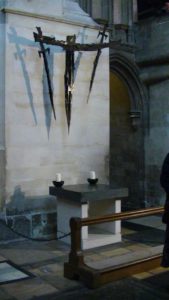
2019 and 2020 will see continuing stories in Great Britain and elsewhere on cardinals and bishops who protected sexually abusive priests and “criminous clerks” (to use King Henry’s phrase); or indulged in sinful and criminal behavior themselves with few or no consequences. 800 years ago, King Henry attempted to try clerics charged with serious crimes in civil courts but failed. The cultural and political power of the Catholic Church was too strong.
The ethic of clerical immunity has remained in the institutional Church to this day; but their most potent weapons of excommunication and ban of the sacraments have no impact on today’s public prosecutors, appointed or elected officials. The Catholic Church is not the church of Christendom anymore and has lost much of its moral authority in Europe, as well as the Americas–home to most of the world’s Catholics. The Benefit of Clergy culture has brought the global church to such a crisis ta the pope has had to intervene to save it.
On February 21-24, 2019 Pope Francis will be convening a meeting at the Vatican of the heads of all the bishops’ conferences around the world to discuss the clerical sex abuse scandals and the importance of child protection. One of the action plans will be on the process of turning over bishops and clergy to secular authorities when they have been credibly abuse of abuse, or hindering investigations of abuse. Cardinal Blase J. Cupich of Chicago, one of the meeting’s organizers observed: “Pope Francis is calling for radical reform in the life of the Church, for he understands that this crisis is about the abuse of power and a culture of protection and privilege, which has created a climate of secrecy without accountability for misdeeds,” he said, adding that “all of that has to end.”
I wonder what the martyred Archbishop Becket would have to say about that? 

Amid the summer’s disgusting and disheartening clergy sexual abuse revelations comes a new twist–an 11-page “testimony” by former Papal Nuncio Archbishop Carlo Maria Vigano, 76. This August 25, 2018 letter, predictably, was published on LifeSiteNews.com. This faithful Catholic media site is a twin of the National Enquirer, a supermarket tabloid known for its titillating sex items and outrageous claims.
Archbishop Vigano’s letter is full of gossip and veiled sex stories. It names names, but curiously many of the ones he targeted are not conservative bishops or cardinals–just liberal and moderate ones, and Archbishop Vigano’s rivals and political enemies in the Vatican bureaucracy and diplomatic service.
Vigano’s testimony has three problem areas; four if you count all the stilettos out for him now.
- Most of the actions he described happened during the papacies of St. John Paul II the Great and Pope Benedict XVI. They will both be slimed in any investigation. If this story snowballs, Pope Benedict will be pressed to discuss Archbishop McCarrick and other sex offenders during his reign and that of his predecessor. That will be a stinker exclamation mark to his papacy.
- The basis for Archbishop Vigano’s call for Pope Francis to resign is his claim Pope Benedict “secretly sanctioned” Cardinal McCarrick for his immoral behavior and Pope Francis looked the other way. He let McCarrick travel, be admired, and have all kinds of influence in appointing U.S. bishops, much to Vigano’s fury. Vigano said that Pope Benedict disciplined Cardinal McCarrick in 2009 or 2010–he wasn’t sure which year since no Vatican official responded to his memos. There are a lot of gaps in his story, including why Pope Benedict said nothing in the remaining four years of his papacy while Cardinal McCarrick continued his public ministry and high profile.
- Archbishop Vigano claims that his motive in all of this is to “stop the suffering of the victims, to prevent new victims and to protect the Church: only the truth can make her free.”
Is that true? Really?
In 2014, Vigano, as papal nuncio to the United States, ordered officials of the Archdiocese of St. Paul and Minneapolis to end an investigation into sexual misconduct on the part of Archbishop John Nienstedt even after two auxiliary bishops explained that the investigation was far from complete. He also ordered those bishops to destroy a letter they sent to him on the investigation. The bishops objected and told him “this would rightfully be seen as a cover-up.” The document Vigano asked them to destroy explored allegations that Archbishop Nienstedt engaged in sexual misconduct with adult males, including seminarians.
Why would Archbishop Vigano be incensed about Archbishop McCarrick but not about Archbishop Nienstedt?
In contrast to McCarrick, Archbishop Nienstedt is a very conservative bishop who actively opposed gay marriage in his state and admitting gay men to the priesthood. Nienstedt protected a predator priest, Fr. Curtis Wehmeyer, whose 2010 sexual abuse of three minors sparked criminal charges and civil petitions against the archdiocese. Fr. Wehmeyer was a regular at gay cruising areas in local parks. He also enjoyed a social relationship with Archbishop Nienstedt.
In an August 27, 2018 interview with Slate.com, an online magazine that covers current affairs, politics and culture, Dr. Massimo Faggioli, a professor of theology and religious studies at Villanova University and a contributor to Commonweal magazine offered this assessment:
“Vigano is just using the Western church, and American Catholicism, and the shock caused by the revelations against Cardinal McCarrick, to make his own personal case against the Vatican, which expelled him and didn’t make him a cardinal. That is a very cynical operation, because Vigano has no interest in the American church. The American church is in big trouble, because we don’t know how it will survive when many of the bishops are hated by many Catholics. We don’t know what kind of church this will be.”
“But remember, in 2011 (Vatican Leaks Scandal), Vigano tried to smear people in the church with accusations that were unfounded. He was working in the institution that oversaw the governance of the Vatican city-state, and when he was told he was not going to become president of the institution, and therefore not a cardinal, and be sent away from the Vatican, he became disgruntled and angry at the second in command, Cardinal Bertone, the right hand of Pope Benedict, and made other accusations against people working in the office he was in, and said they were guilty of conflicts of interests and so on. There was an investigation, and they found nothing that was credible. But that never stopped them from sending him to Washington, DC. So what he published 24 hours ago is not the first time he has done this kind of thing. This time he went for a big target, Pope Francis, even though his real enemies are Pope Benedict’s people.”
“I think Vigano represents the part of the right wing of the church that sees the LGBT issue as the defining issue of this millennium, or this century, and this pontificate. They think that anything can and should be done to stop Pope Francis from ushering in a more welcoming church for LGBT people. So in this there is a convergence between Vigano, who has always been obsessed with the gay lobby and gay conspiracy, and the American Catholic right.”
Hell hath no fury…….
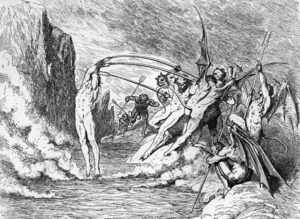
Where is Fr. C. John McCloskey III? For roughly a decade, 1997-2005, the handsome, dashing, charming Opus Dei priest was storming the Beltway in his black soutane. 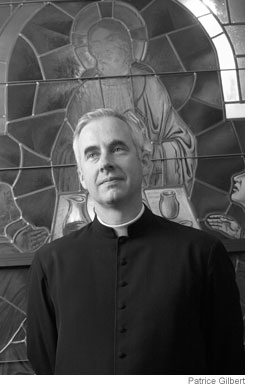
A 1975 graduate of Columbia University, McCloskey was first drawn to Opus Dei when he was a teenager growing up near Washington, D.C. During and after college he worked on Wall Street, leaving in his mid-20s to become a priest. Many of McCloskey’s bios note he is also an avid squash player.
Fr. McCloskey was high-profile, with TV commentator spots, prominent news media quotes, and a string of conversions of powerful men. He was groomed by Opus Dei to do exactly what he did so successfully–befriend Republican political and cultural elites; and articulate an orthodox Catholic point of view. Then, pfft–nothing. Out of sight.
In the years since he left D.C., Fr. McCloskey, 64, has kept a much lower profile. He’s still writing and doing pastoral ministry, but not on a secular stage. McCloskey lives in Menlo Park, California, home of Facebook, Kleiner Perkins, Caufield & Byers, Sequoia Capital, Silver Lake Partners, and many Fintech companies. Perhaps Opus Dei and McCloskey have moved on to the new power elite?
However, the original mystery remains–what happened? Why would Opus Dei transfer Fr. McCloskey out of his Washington, D.C. powerhouse–the Catholic Information Center on K Street–and pack him off to obscurity in Chicago? 
Theory 1: Did he draw too much attention to himself by his high profile converts and media appearances?
Every article about Fr. McCloskey notes with pride his converts to Catholicism. Most are from Jewish and Evangelical Christian backgrounds, with a sprinkling of Episcopalians. “A lot of these men had been thinking about Catholicism before,” McCloskey explained, “and it wasn’t just me per se, but the fact a lot of very smart people–senators and judges–were looking for truth in their lives. It helped quite a bit that many of these men were influenced by men at their level who were Catholics. In a lot of cases, those friends referred them to me. Then the word got out that I was willing to instruct these sorts of people. It’s just like the brokerage business or any other business of sales,” said McCloskey. “You get a reputation, you deal with one person and they mention you to another person and they mention you to another person…and all of a sudden you have a string of people.”
Here are the converts cited most:
. Sam Brownback, former U.S. senator and governor of Kansas; and now United States Ambassador-at-Large for the U.S. Commission on International Religious Freedom,
. Robert Bork, judge and former U.S. Supreme Court nominee,
. Robert Novak, “Crossfire” co-host and columnist,
. Alfred Regnery, conservative book publisher. A revised and updated English edition of The Dictator Pope—a book highly critical of Pope Francis – was released both in hardcover and e-book formats by Regnery Publishing on April 23, 2018.
. Newt Gingrich, political consultant and former minority whip and speaker of the U.S. House of Representatives, and former Republican presidential candidate. His wife, Callista Gingrich, currently serves as U.S. ambassador to the Holy See,
. Lawrence Kudlow, economist and long-time CNBC commentator, now President Trump’s top economic policy advisor,
. Lewis Lehrman, financier and former New York gubernatorial candidate,
. Jeffrey Bell, political consultant and PR guru,
. Maj. General (Ret.) Josiah Bunting III, author, educator, former superintendent of Virginia Military Institute, and currently head of the Henry Frank Guggenheim Foundation,
. Dr. Bernard Nathanson, abortion doctor and one of the founders off the National Abortion Rights Action League,
. Mark Belnick, former Tyco International general counsel.
Two women are occasionally included in this distinguished group:
. Meghan Cox Gurdon, children’s book critic for the Wall Street Journal and Mayflower descendant,
. Laura Ingraham, conservative TV and radio talk show host, author, and Fox News Channel contributor.
Theory 2: Did his emphasis on male friendship as an evangelization tool fall flat? 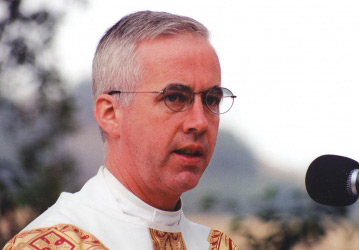
In his 2007 book with Russell Shaw, Good News, Bad News: Evangelization, Conversion and the Crisis of Faith, Fr. McCoskey described his theory about American men–they lost the ability to maintain “virile” male friendships. They were victims of a “Friendship Deficit Syndrome.” In another article, Friendship: The Key to Evangelization of Men, McCloskey described a group of Italian men at lunch in Rome, drinking “vino russo” and having a good time together. “I got the impression that this was not a singular event but rather one of frequent meetings of long-time close friends. For some reason it seemed strange to me, and at the same time appealing.”
McCloskey elaborated, “…in the U.S., men got together to watch sports on TV or in a bar, drank beer instead of wine, ate stacked sandwiches instead of pasta. “More often than not, they are enjoying not each other but the game.” “As things stand today, for many Catholic men “friendship” can mean a largely artificial tie, based on a common interest in beer, cars, sports, hunting, fishing, or even an unhealthy interest in the pursuit of young women. (In fact, I hesitate to use the word “friendship” to describe this relationship; would “acquaintance” be a better term?) A real male relationship is a deep and lasting bond that goes to the very core of what a man is or can be.”
McCloskey blames several things for the lack of male friendships: the loss of exclusively male clubs and schools, moving due to job changes, working women who want their husband’s help, leaving no time for men to socialize together; and finally, “gay culture.” “To complicate matters still further,” said McCloskey, “in today’s society many male relationships are openly homosexual, based on the use of each other as objects of pleasure. Many forms of public entertainment–films, television and the theater–have accepted homosexuality as normal, and begun to portray heterosexual males as fools who live under the sway of domineering women. One of the many unhappy side-effects of this open public perversion,” he goes on, “is the fact that when any small group of adult males is seen together, at least in some urban centers, they are assumed to be homosexual.”
After reading this article, which made a point to disparage traditional male pastimes of hunting, fishing, watching sports and chasing women–I tried to image my father’s reaction: “What would you expect from a priest?” he would have chuckled, with a twinkle in his ex-Marine, Irish eyes. As for people thinking he was a fairy because he was out with a couple of buddies, well, dad wouldn’t have taken that seriously. I would suggest that only closeted, self-loathing homosexuals would be anxious about being perceived as gay. It wouldn’t occur to my father or most heterosexuals to even think about it.
A goal of evangelical friendship is conversion. The use of friendship in a conversion process walks a very fine line between support and manipulation. Men who feel guilty about past acts; men in a mid-life crisis; the lost and lonely are especially vulnerable. Do most men feel they don’t spend enough time with other men? I don’t know. I value women-only activities, dinner parties and events but don’t associate them with my spiritual needs. My social needs–yes, but I’m a lesbian.
Theory 3: His article fantasizing a U.S. religious civil war made people uneasy about him.
In 2000, Fr. McCloskey published a long essay in the Catholic World Report entitled “2030: Looking Backward.” It is a fictional piece in which his alter ego, Fr. Charles, a 77-year-old priest writes a January 1, 2030 letter to Fr. Joseph, a 25-year-old priest, reflecting on the recent breakup in the the United States and the emergence of the Regional States of North America.
In his essay, McCloskey foresees a smaller Catholic Church in the future. “…the Catholics we do have are better formed, practice their Faith in the traditional sense at a much higher level than ever, and are increasingly eager to share that Faith with their neighbors. Dissent has disappeared from the theological vocabulary.” In addition, hundreds of thousands of Evangelical Protestants convert to Catholicism. 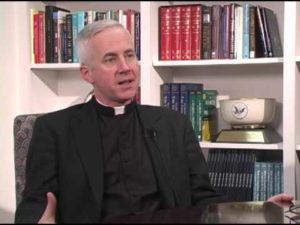
It sounds like the wishful thinking of a strident, thwarted, orthodox Catholic. In 2000, in spite of the 21-year reign of doctrinaire Pope John Paul II, moderate and liberal Catholics kept a tenacious grip to their faith. American Catholicism continues to be messy, contentious and organic as different groups within the Church jockey with one another on what it means to be Catholic, and how best to live their faith between the Gospels, the Magisterium and American democratic ideals and culture.
The most controversial paragraph in the essay was the one where Fr. McCloskey appeared to encourage the breaking apart of the union, and the development of Christian-governed states. As part of the reconstitution of the U.S., he appears to sanction the deaths of many thousands of people.
As he put it, “We finally received as a gift from God what had been missing from our ecclesial experience in these 250 years in North America–a strong persecution that was a true purification for our “sick society.” The tens of thousands of martyrs and confessors for the Faith in North America were indeed the “seed of the Church” as they were in pre-Edict of Milan Christianity. The final short and relatively bloodless conflict produced our Regional States of North America. The outcome was by no means an ideal solution but it does allow Christians to live in states that recognize natural law and divine Revelation, the right of free practice of religion, and laws on marriage, family, and life that recognize the primacy of our Faith.”
McCloskey acknowledged “A goodly number of faithful Catholic writers also found it dark and threatening, although I had intended it to be positive and optimistic.” Would the politicians, elected officials and other prominent people that McCloskey consorted with feel the same way? Probably not. In the hands of secular media it could be framed as a fanatic’s call to sedition and violence.
Fr. McCloskey did make some accurate predictions in his essay, including the regional splits of “red states” and “blue states”; and the affinity between Evangelical Christians and ultra conservative Catholics on many political issues. This coalition supported Republican party candidates in exchange for their votes on abortion, homosexual civil rights protections, same-sex marriage, religious liberty/conscience rights and federal funding for their institutions.
He also articulated the struggle between Catholicism and secular society. There is an eerie parallel with McCloskey’s essay and the dystopian novel, Lord of the World. This obscure, apocalyptic book was written in 1907 by Monsignor Hugh Benson, an Anglican convert to Catholicism. 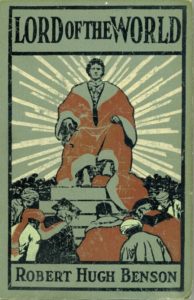
It imagines a socialist, humanistic and technologically advanced world where religion has been rejected or suppressed. It is a story about the Antichrist and End Times–the product of a struggle between a radically secular society and the one alternative to it–the Catholic Church. Most religious leaders have been co-opted by humanist ideals. Belief in God is replaced by belief in man. Only a small remnant of the Catholic faithful remain. To a certain point of view, this is a chillingly accurate depiction of our present states.
What would Fr. McCloskey’s alter ego, Fr. Charles, say now if he could look back at what’s happened in the years since 2000?
What would he say about the sexual abuse holocaust that engulfed the global church and continues unabated to this day? A month doesn’t go by without another cardinal, bishop, church official or priest getting dragged into court, or the court of public opinion. What are his thoughts on Pope Benedict XVI, the former Joseph Cardinal Ratzinger, who became the first pope in almost 600 years to step down from the papacy. What horror did Pope Benedict see that caused him to give up and quit? His resignation ended the reign of four decades of conservative popes, and their “reform of the reform” of Vatican II. Springtime arrived, but it was for liberal and progressive Catholics… Could Fr. Charles ever have envisioned what would follow after Jorge Cardinal Bergoglio of Argentina was elected Pope Francis in 2013? In his wildest dreams, could he imagine a pope saying, “Who am I to judge?”

Ultra conservative Catholic Wall Street Journal readers choked on their toast and scrambled eggs this morning when they read the headline of an article by Francis X. Rocca: “Pope Says Fighting Poverty Is as Essential as Opposing Abortion.”
Here is the article in full – 
“Pope Francis criticized Christians who emphasize opposition to abortion above social causes such as poverty and migration, in his latest effort to readjust the priorities of Catholic moral teaching from what he has characterized as an overemphasis on sexual and medical ethics.
“Our defense of the innocent unborn needs to be clear, firm and passionate,” the pope wrote in a document released by the Vatican on Monday. “Equally sacred, however, are the lives of the poor, those already born,” including the neglected elderly and victims of human trafficking.
The pope’s words appeared in “Gaudete et Exsultate” (“Rejoice and Be Glad”), a reflection on “holiness in today’s world” that includes advice on resisting the “verbal violence” of social media and achieving spiritual concentration amid a “culture of zapping.”
Pope Francis has repeatedly called for reducing the emphasis on certain moral issues and increasing attention to social and economic justice.
That approach stands in contrast with that of his predecessor, Pope Benedict XVI, who specified opposition to abortion, euthanasia and same-sex marriage among a handful of “nonnegotiable” values for the church.
In terms of ethical priorities, Pope Francis wrote in the document released Monday that an exclusive focus on abortion reflects a “harmful ideological error” of those who play down the importance of social action or denigrate it as “superficial, worldly, materialist, communist or populist.”
“We cannot uphold an ideal of holiness that would ignore injustice” in the form of economic equality, the pope added.
The pope also criticized what he characterized as an exaggerated focus on moral relativism, a concept closely associated with the teaching of Pope Benedict, who famously denounced what he called a “dictatorship of relativism” in contemporary culture.
“We often hear it said that, with respect to relativism and the flaws of our present world, the situation of migrants, for example, is a lesser issue. Some Catholics consider it a secondary issue compared to the ‘grave’ bioethical questions. That a politician looking for votes might say such a thing is understandable, but not a Christian,” Pope Francis wrote.
He also warned against the danger of seeking social change while neglecting personal piety through prayer and Bible reading.
“Christianity thus becomes a sort of NGO stripped of the luminous mysticism” exemplified by St. Francis of Assisi and Mother Teresa of Kolkata, the pope wrote.”
Catholics are now called to do more than be against a handful of sexual sins and sinners to declare themselves “Faithful Catholics.”
Conservative Catholic publications and bloggers love gay marriage and romance stories. They are fascinated and obsessed by them. They are reported with relish, in gleeful, triumphant detail, especially when a Catholic school teacher or long-time parish volunteer loses his or her position after marrying their partner.
Conservative Catholic morality watchdogs have been all over Fr. James Martin’s book, Building a Bridge: How the Catholic Church and the LGBT Community Can Enter Into a Relationship of Respect, Compassion and Sensitivity.” The often anonymous complainers about the book and Fr. Martin’s speaking appearances protest his lack of condemnation for homosexual relationships, and that he does not use the term “intrinsically morally evil” to describe them.
It’s curious, given their obsession with gay and lesbian sex, that no conservative Catholic publications have covered the story on Sodalitium Christianae Vitae beyond one or two mentions. There has been no accompanying editorial on “homosexual agendas,” or “homosexual networks” out to undermine traditional Catholic moral teaching. An extensive web search could not produce one conservative Catholic blogger who posted about it. There is a curious silence from the ranks of the ultra conservatives and self-described “orthodox” defenders of faith and “truth.” Why is that?
Here’s a simple answer: conservative Catholics don’t condemn one of their own. Luis Fernando Figari was exposed as a closeted homosexual who is also a liar, hypocrite, molester and rapist. But he didn’t try to change church teaching; he just went around it. He’s a sinner, not a subversive. 
The Sodalitium Christianae Vitae, or Sodalitium of Christian Life as it’s known in the U.S., was established in Lima, Peru in 1971 by Luis Fernando Figari, a law student. Sodalitium was set up to inculcate teenage and young men from the Peruvian elite with a conservative strain of Catholicism, shaping them to champion these values as adults. In 1997 Pope John Paul II approved it as a lay society of Apostolic Life of Pontifical Right, under the supervision of the Congregation for Institutes of Consecrated Life and Societies of Apostolic Life.
By 2010 abuse allegations began to seep out. In May 2011 a man filed a complaint with Peru’s ecclesiastical court that was forwarded to the Vatican. More complaints were filed in 2013 and 2014. But it wasn’t until 2015 that the lid blew off Sodalitium’s secrets with the publication of a book, Half Monks, Half Soldiers, by Pao Ugaz and Pedro Salinas. The journalists chronicled years of sexual, physical and psychological abuse by Figari and other leaders in the community, including Figari’s #2, German Doig Klinge, the former Sodalitium vicar general who died in 2001. Presumably German Doig’s cause for canonization–promoted by Figari and Sodalitium–will now die a quiet death.
When Peruvian prosecutors began investigating the abuse allegations in 2015, Figari left for the Vatican.
Both the Vatican and Sodalitium have commissioned their own investigations. The 2016 Sodalitium report says Figari and other members sexually abused at least 19 minors and 17 adults starting in 1975. A former member said when he was 15 Figari had anal sex with him several times. The report also said he instructed a man to kiss his penis, and touched and hugged members while naked. Figari also knew of three adult members who sexually abused minors. 
How could this go on for so long? No one in the organization reported the abuse, or apparently, tried to stop it. The shepherds looked the other way and ignored complaints. They include the last two popes, St. John Paul II and Benedict XVI, Vatican bureaucrats, and bishops who agree with the mission of conservative groups like the Legionnaires of Christ and Sodalitium uber alles. It might also include some members of the closeted “Lavender Mafia” in the Vatican who protect their own. 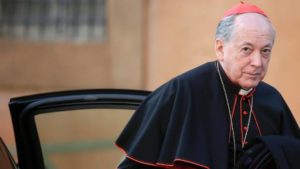
Cardinal Juan Luis Cipriani Thorne, the ultra conservative archbishop of Lima and a member of Opus Dei, had an ambiguous response to the scandal. He ignored it until commenting became unavoidable. But he also gave a warning in a homily that he would not accept criticism from “false moralists who want to mistreat the Church.”
Cardinal Cipriani wasn’t so discreet in 2013, when he outed a Peruvian legislator, Carlos Bruce, on a radio program. The reason for his fury: Bruce had sponsored a bill to allow same-sex couples to enter into civil unions. ‘If a person has made some alternate choices, that’s their problem and he can do whatever he wants on his own. But I don’t think that we’ve elected congresspeople just so they can justify their own life choices. I don’t think that’s right.” Bruce, who is divorced with two sons, later told news media that he would not dignify such comments with a response. The cardinal’s comments resulted in Peruvian tabloid La Razon to run the headline “Cipriani pulls Bruce out of the closet” on its front page.
As far as I can tell, Cardinal Cipriani never went on TV, radio or print media, or used one of his homilies to denounce Luis Fernando Figari and the “saintly” German Doig for using their leadership positions to procure and sexually assault teenage boys and young men.
Although the Sodalitium sex abuse scandal did not come up in any of the Pope’s public speeches or audiences during his January 15-21 2018 trip to Peru and Chile, it shadowed his entire stay. On January 10, 2018, shortly before traveling, Pope Francis essentially took over Sodalitium by appointing Columbia Bishop Noel Antonio Londono Buitrago as papal commissioner. In addition to sex abuse, Vatican investigators also uncovered financial irregularities.
On the January 21, 2018 return flight to Rome from Lima, Pope Francis said that Figari’s case is currently before the court of appeals in the Apostolic Signatura, and “will be released in less than a month.” “I am not very informed, but the thing is not very favorable for the founder,” he added. “If the Apostolic Signatura decides in favor of the appeal, it will not make sense,” he said, “because many, many serious cases are accumulating.”
What will happen to Figari? Will the Vatican allow him to be extradited to Peru to be arrested and face trial; or will it permit him to retire to a “life of prayer and penance” like the disgraced Legionnaires of Christ founder and leader, Fr. Marcial Maciel Degollado?
I’m sure Cardinal Cipriani would not want the publicity and investigative reporting that would accompany Figari’s return to Lima. He will fight tooth and nail to keep him in Rome. 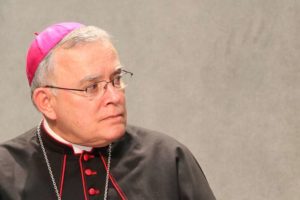
U.S. Archbishop Charles Chaput of Philadephia, who invited Sodalitium representatives to staff campus and parish ministries, would find it awkward to defend their leadership while castigating moderate and liberal Catholic politicians for defending gay and lesbian civil rights.
The less said, the better. 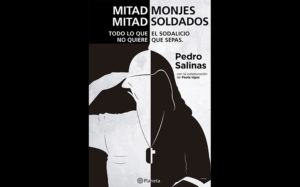
Pope Francis, who inherited this mess, and whose foot-dragging has caused complaint, does get a partial defense from Pao Ugaz, the investigative journalist and co-author of Half Monks, Half Soldiers.
“The Vatican is set up so that the pope reigns but doesn’t govern,” she said. “Francisco is much more political (than previous pontiffs) and he has more leverage but there is still a lot of resistance and it remains to be seen who will prevail.”
Late last year the Italian bishops’ television channel, TV2000, broadcasted a series of conversations between the pope and a Catholic prison chaplain looking at the Lord’s Prayer line by line. The episode broadcast on December 6, 2017 focused on the line, “Lead us not into temptation.”
Pope Francis suggested the Church should amend the translation of the “Our Father” to clear up the confusion around the phrase, “Lead us not into temptation.” “That is not a good translation,” the pope said in the December 6th interview with Italian television. 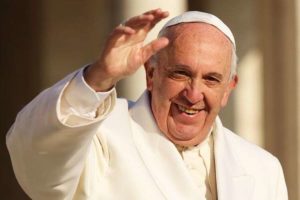
“I’m the one who falls,” Pope Francis explained. “But it’s not God who pushes me into temptation to see how I fall. No, a father does not do this. A father helps us up immediately.” “The one who leads us into temptation is Satan,” the pope said. “That’s Satan’s job.”‘
A possible alternative to “Lead us not into temptation” is “Do not let us fall into temptation.” In his interview, Pope Francis suggested that the phrase be adopted more widely. I was surprised to learn Catholics in several countries have used a new translation for some time. “Do not let us fall into temptation” is currently used by the Church in France, Spain, Belgium and Benin. In Italy, “Do not abandon us in temptation” has been used since 2008.
There are no Bible stories or saints’ tales I can recall where God leads a person towards temptation. The one prominent story of Jesus being tempted in the desert was through his encounter with Satan. God didn’t lead Eve to eat and offer the forbidden fruit. There are hundreds of anecdotes of tempted saints, but they feature demons, devils or sexy women.
The National Catholic Register, a conservative bi-weekly, devoted major space in its December 24, 2017 edition to the Our Father line translation, with a front-page story and editorial rebutting the pope’s suggested change. The reasoning to oppose a change was either theological, political or emotional. 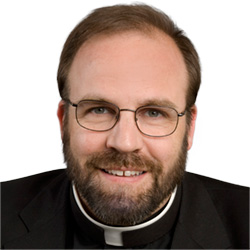
The author of the article was Msgr. Charles Pope, pastor of Holy Comforter-St. Cyprian parish in Washington, DC. He is a contributor to Community in Mission, a blog of the the Archdiocese of Washington, DC. In his article, Msgr. Pope elaborated on three key points:
- “While the intention may be to assist the reader to understand that God does not tempt us or directly cause us to fall, the effect is to imply that the inspired Greek text is inadequate.”
- “Second, in the English-speaking world, the Lord’s Prayer is one of the few prayers we have in common with non-Catholics. Even many of the unchurched have committed it to memory.”
- “Lastly, by changing the line we will miss a “teachable moment” in which an important truth about God can be explained.”
“Surely God does not tempt us in any direct sense,” Msgr Pope reasoned. “He does not will to entrap us or to confound us so as to make us fall. However, because he is the first cause of all existing things, he is also the first cause of things that tempt us. So, in asking God to “lead us not into temptation,” we ask him, who, providentially holds us and all things in existence, to lead us forward with the graces we need to resist it. This will allow us to enjoy the good things he gives without giving way to the temptations of inordinate desires.”
Msgr. Pope’s analysis is good, and it is worth pondering as a spiritual reflection. But his explanation on the meaning of one line involves a long and very intellectual argument–counter intuitive to a simple petition. Msgr. Pope concludes that we should “remain rooted in the translation of the Lord’s Prayer that has sustained and united the English-speaking world for hundreds upon hundreds of years.”
This statement by Msgr. Pope is not entirely accurate. Since the Reformation, Christians have disagreed on the wording and translation of another line in the Lord’s Prayer: “Forgive us our trespasses, as we forgive those who trespass against us.” Catholics, Orthodox, Lutherans, Methodists and most Anglican/Episcopalians use this version. Presbyterians and other Christians use, “Forgive us our debts, as we forgive debtors.” Some Christians replaced “trespasses” and “debts” with “sins.” The different words have different meanings in the ‘English language. “Trespasses” means having crossed a line that may or may not have been clearly marked. “Debtors” implies someone owes you and hasn’t settled the debt. What we hear from the prayer depends on the words we use.
I have started to say: “Do not let us fall into temptation” when I say the Our Father in prayer or at Mass. I was glad to let go of “Lead us not into temptation,” which I have always felt was antithetical to trusting God. 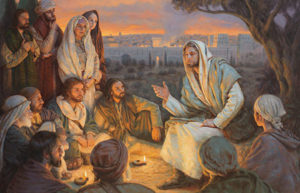
Bishop Robert Morlino was appointed by Pope John Paul II as the 4th bishop of Madison, Wisconsin on May 23, 2003. The “good news” for Madison Catholics is that he turns 75 on December 31, 2021. They just need to hang on and run out the clock.
On October 21, 2017, his vicar general, Rev. Msgr. James Bartylla, emailed diocesan priests on “Consideration of Funeral Rites for a Person in a Homosexual Civil or Notorious Union.” Though it was sent from the vicar general, the communication had the approval of Bishop Morlino. 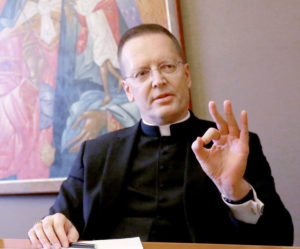
Priests should not mention the name of the surviving partner, nor make any reference to the “unnatural union” if funeral rites are provided for someone in a same-sex relationship. In addition, priests should keep in mind the “attitude” of the family toward the church, whether the deceased or surviving partner was a “promoter of the gay lifestyle,” and whether the deceased person had shown “signs of repentance before death.”
Predictably, this has caused a stink. Even a few bishops weighed in on the opposite direction–something that rarely occurs in their “collegiality” culture.
Bishop Morlino and Msgr. Bartylla have not extended the funeral ban to any other sexual activity the church finds sinful or shameful–rape, incest, adultery, pornography, prostitution, molestation–by clergy or laity to children, young people or adults. The only ban is to lesbians and gays in a civil marriage.
In this 13 years as bishop of Madison, Morlino has regularly detonated controversy bombs. 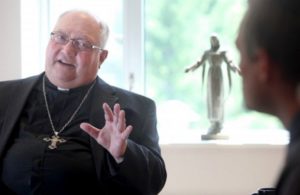
In 2004, six months after arriving in Madison, he came out swinging in the Catholic Herald newspaper. Morlino stated that Madison existed below a “moral minimum” and that they city had “virtually no public morality.” He specifically cited the city’s StageQ community theater–a lesbian and gay troupe–as evidence of this view.
But the worst episode was his reaction to a March 2010 New York Times expose of the Vatican handling of the Rev. Lawrence C. Murphy. Father Murphy is believed to have molested hundreds of boys between 1950 and 1974 while assigned to a Milwaukee area school for the deaf. In the late ’90s, the Congregation for the Doctrine of the Faith, a Vatican office headed by then-Cardinal Joseph Ratzinger–the future Pope Benedict XVI–stopped attempts by Milwaukee Archbishop Rembert Weakland and Cardinal Bertone of the CDF to defrock the priest.
Bishop Morlino, who ripped Madison’s lack of “public morality” rushed to the defense of Pope Benedict XVI’s management of the Fr. Murphy sex abuse complaint–
“As the Church in Europe now uncovers some of the sins committed by its clergy members, the mass media was trying, with every fiber of their being to make Pope Benedict XVI look guilty. Their big line is, ‘what did the Pope know and when did he know it?’ That is, ‘he’s to be treated like any other politician; he’s probably corrupt, and it’s our role to uncover his corruption.'”
And he goes on…
“Of course, many see their role as to destroy the Church of Christ, the Catholic Church. They want us out of the way. So, a very good way to attack the Church is to attack the Holy Father himself. These same people who demand to know what the Pope knew and when he knew it want to place the responsibility for the acts of others (undertaken far away and in different time periods), at the feet of the Pope and make him responsible.”
He chides the “disobedient people” demanding accountability…
“In order to be responsible for something, one has to have the authority to do something about it. And the very people who want to make the Holy Father responsible for everything heinous in the sexual misconduct scandal are the least likely to accept the Pope’s authority in any matter. They are the most disobedient people, in general. Yet they want to lay all the responsibility at the Pope’s feet. That simply makes no sense and we should not be fooled.”
Bishop Morlino contended it was church officials in Milwaukee, not the Vatican, who controlled what happened with Fr. Murphy. “It is clear the Congregation for the Doctrine of the Faith, of which Cardinal Ratzinger was then at the head, had nothing to do with the criminal case of the sickening abuse by Fr. Lawrence Murphy of several young deaf men.”
According to the New York Times, in 1993, with complaints about Fr. Murphy stacking up, Archbishop Weakland hired a social worker specializing in treating sexual offenders to evaluate him. After four days of interviews, the social worker said that Fr. Murphy had admitted his acts, had probably molested about 200 boys and felt no remorse.
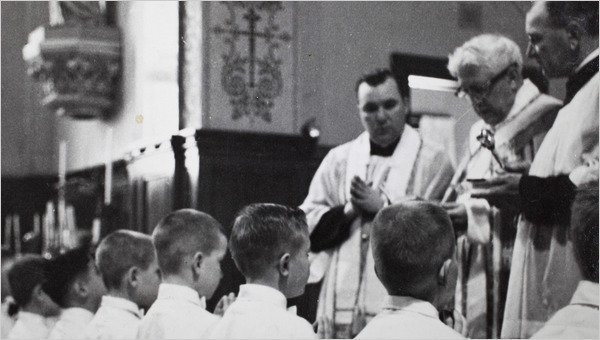
In 1996 Archbishop Weakland sent two letters to Cardinal Ratzinger, and one to the Apostolic Signatura, the church’s highest court, asking for guidance on whether to conduct a canonical trial of Father Murphy. Archbishop Weakland wanted Murphy defrocked.
The Congregation for the Doctrine of the Faith had oversight of the case because Father Murphy was suspected of using the confessional to commit his crimes — a crime that is considered particularly serious under the church’s canon law because confession is a sacrament.
a href=”https://nihilobstat.info/wp-content/uploads/2017/11/cardinal-joseph-ratzinger.jpg”>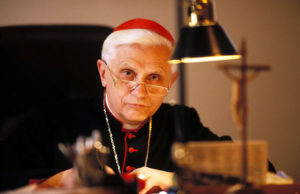
In 1998, Fr. Murphy, who was dying, wrote to Cardinal Ratzinger asking for clemency. “I simply want to live out the time that I have left in the dignity of my priesthood. I ask your kind assistance in this matter.” Cardinal Ratzinger’s office moved to halt the defrocking process. Fr. Murphy died later in that year. An auxiliary bishop of Milwaukee celebrated his funeral Mass, and he was buried in his priestly vestments.
What moral lesson should we take from all of this?
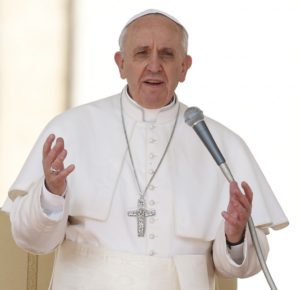
In an October 17, 2017 audience with students from the “Institution des Chartreux” in Lyon, France Pope Francis reminds them of their need to keep their moral formation at the heart of their drive to professional success and fulfillment.
“You are engaged in a course of study that prepares you to enter the great schools of commerce that, when the moment comes, will enable you to exercise a profession in the world of international finance. I am glad to know that your academic formation includes a strong human, philosophical and spiritual dimension, and for this I thank God. Indeed, it is essential that, from now and in your future professional life, you learn to remain free from the allure of money, from the slavery in which money traps those who worship it. And it is also important that you are able to acquire today the strength and the courage not to obey blindly the invisible hand of the market. Therefore, I encourage you to draw benefits from your time studying to train yourselves to be promoters and defenders of a growth in equality, artisans of a just and fitting administration of our common home, namely the world (cf. Apostolic Exhortation Evangelii gaudium, 204; 206).”
“Here in Rome you experience a form of immersion in the history that has so strongly marked the rise of the European nations. Admiring what the genius of men and the hopes they have cultivated have been capable of realising, you too must take care to leave your imprint on history. Indeed, you have the capacity of deciding your future! I wish to repeat it: you have the capacity of deciding your future. Therefore I urge you to become responsible for this world and the life of every man. Never forget that “every injustice against a poor person is an open wound, and diminishes your very dignity” (Catechesis, 20 September 2017). And, even though this world expects you to head towards success, give yourselves the means and the time to journey the paths of fraternity, to build bridges between men rather than walls, to add your stone to the edification of a more just and humane society.”
Every pope in the last century has touched on this ethic, including Pope Benedict XVI and St. John Paul II. However, I don’t think has been stated as often, and as strongly, as Pope Francis. Pope Leo XIII laid the foundation of modern Catholic social teaching with Rerum Novarum – an encyclical on capital and labor. It was published on May 15, 1891.
Earlier this week, I had an exchange with a good friend about the values in my college formation:
“Mary, When I attended Trinity, the values were academic rigor, service to society and others, and our Catholic faith as the foundation for professional and community life. We were encouraged to make an impact, to contribute. I have lived Trinity’s values all my life. Are those the same values now at Trinity?” (Note – I entered Trinity College in Washington, DC in September 1970 and graduated in May 1974.) 
Trinity was founded in 1897, so I’m sure the teaching of Rerum Novarum had an impact on the new college’s moral and ethical mission.
Especially as a graduate of a Catholic college, I was dismayed to see niche morality on display in the National Catholic Register’s (a national newspaper) 2017 Catholic Identity College Guide. The paper sent ten questions to the 197 U.S. Catholic colleges and universities to ostensibly verify Catholic identity. Of that number, 34 returned the questionnaires with the correct answers. You can get the flavor of the survey in a few of the questions:
- “Did the president make the public “Profession of Faith” and take the “Oath of Fidelity”?
- “Did all Catholic theology professors take the “Oath of Fidelity”
- “Do you exclude advocates of abortion, euthanasia, embryonic stem-cell research, cloning or advocates of the redefinition of marriage as commencement speakers and/or recipients of honorary degrees?”
- “Do you exclude sponsoring campus groups and clubs that are not in line with Catholic teaching (examples: abortion and LGBT-related clubs)? If allowed, please explain.”
- “Do you prohibit coed dorms?”
No mention of advocates of the death penalty? No mention of barring executives from companies who have endorsed or looked the other way on shoddy or criminal financial practices? Notorious polluters? Why, I wonder? Aren’t these “Life” issues?
I think it is good and needed to encourage Catholic identify in education and especially young people. Young people want to talk about what’s important or troubling them, and they want other people to hear what they have to say. We need to listen, and to encourage the exercise of their conscience, which will be their moral compass for the rest of their life–especially if they go into business.
|








































